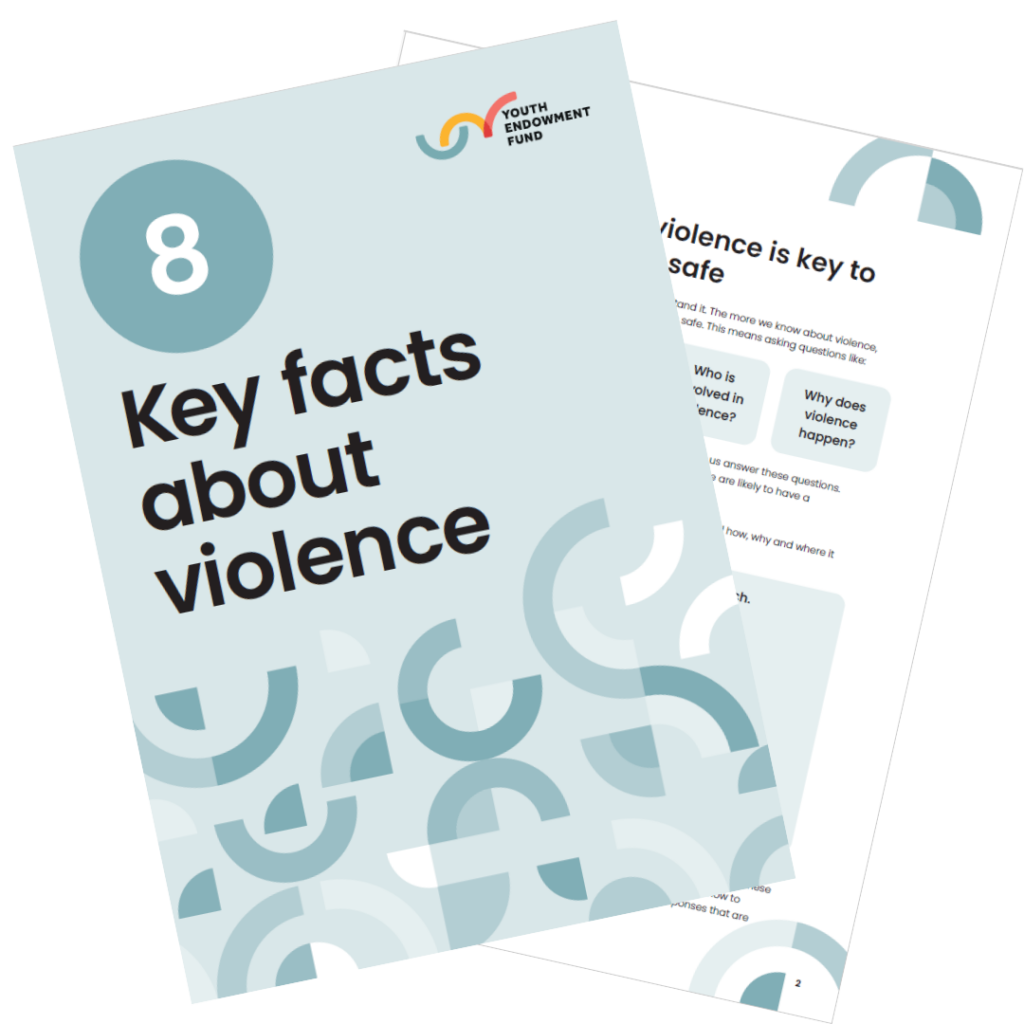
Key Facts About Violence

Key Facts About Violence
There are significant racial and ethnic inequities in the youth justice system and exposure to violence.
Most children who interact with the police and youth justice system are White. However, considering their share of the population, children from Black backgrounds are overrepresented at all levels. For example, Black children make up 6% of all 10–17-year-olds, but in 2022/23, they accounted for 26% of children in custody – 4.4 times more than their population share. Black Caribbean children are particularly over-represented in arrests – they are 355% more likely to be arrested compared to their share of the population. Black children are also disproportionately likely to be victims of violence. Over a third (35%) of all 16–24-year-old homicide victims in the latest year were identified as Black. This is over six times more than their share of the population.
There is also significant overrepresentation in some smaller groups. For example, children from Gypsy and Irish Traveller backgrounds are 118% more likely to be arrested compared to their share of the population.
Preventing violence requires us to acknowledge, understand, and tackle these racial inequities. It’s important to recognise that they are the result of centuries of racism and inequality. They are compounded by a complex set of issues, including racism, access to services and opportunities, cycles of deprivation and social exclusion, and mistrust in public institutions. These conditions increase exposure to violence, both as victims and as perpetrators.
Preventing violence requires us to understand why these inequities exist and challenge the role that racism plays in perpetrating them. This includes understanding inequities in children’s experiences of wider systems like youth justice, education and access to employment and mental health support. The YEF set out our own approach to this in our race equity strategy.

“There is a lack of honesty in our political discussions when looking at the violence that disproportionately impacts some young people. They can fail to address the structural racism and material inequalities that mean working class communities of colour are exposed to the deprivations that make us far more susceptible to exposure to violence.
“These entrenched inequalities rest on long histories of racism and exploitation. The mainstream conversation ignores this and instead promotes a ‘common-sense’ view that seeks to explain racialised disproportionalities of criminality as an inherent ‘community problem’; by a framing that talks about ‘family breakdown’ and ‘cultural’ issues. This enables a policing and carceral approach which we know has caused disproportionate surveillance and harm to children and young people of colour – without necessarily producing the violence reduction it purports to.
“We need to change the conversation. Disrupting and preventing violence means addressing root causes – structural racism and the economic structures that reproduce inequality, rather than focusing on punitive approaches which target individuals and communities of colour.
“We must prioritise healing, genuine community safety and social justice, invest in community-led solutions and trauma-informed support systems, and address the social and material conditions in which violence flourishes.”
Get your copy of our latest research resource on the key facts about violence.

